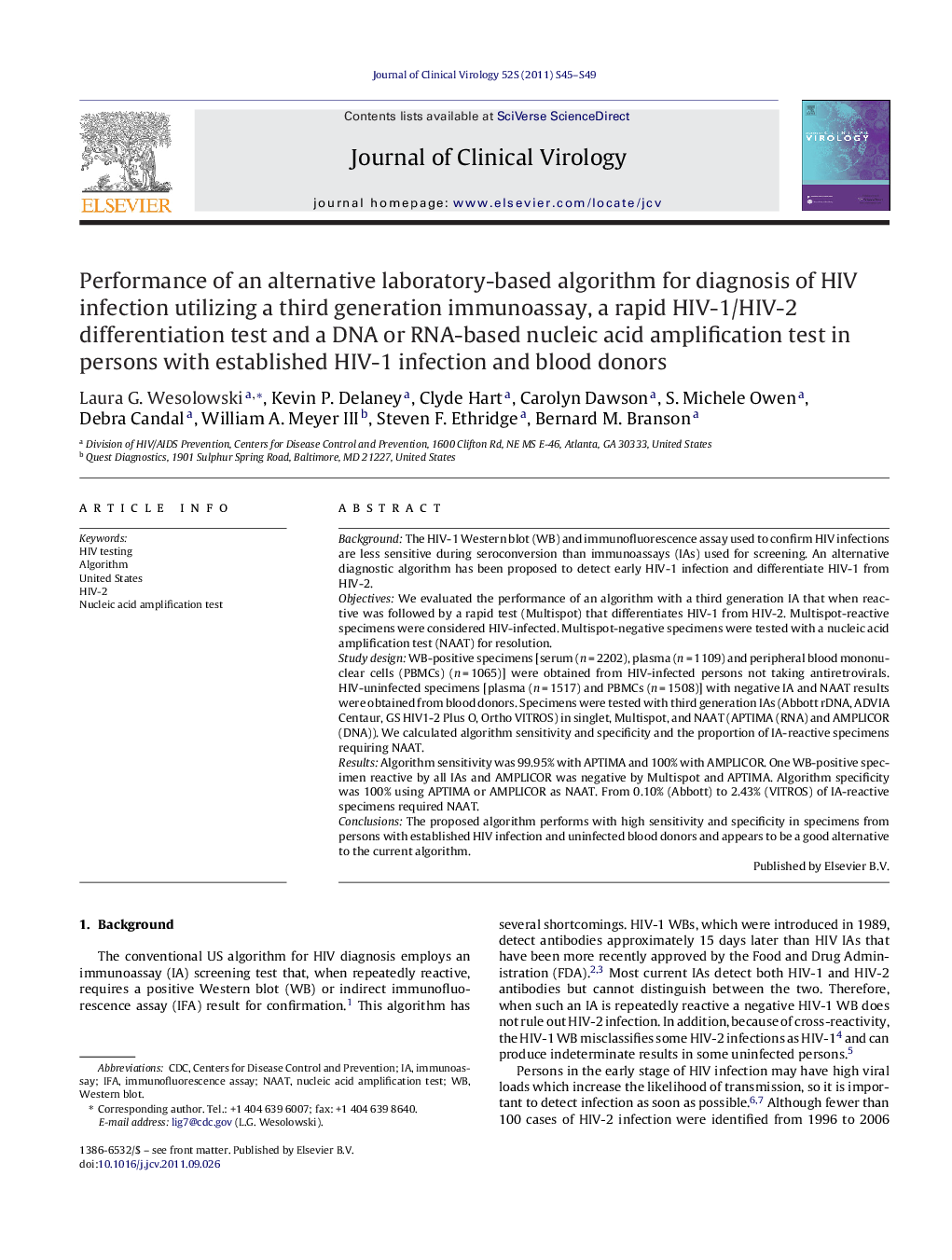| کد مقاله | کد نشریه | سال انتشار | مقاله انگلیسی | نسخه تمام متن |
|---|---|---|---|---|
| 3369643 | 1219045 | 2011 | 5 صفحه PDF | دانلود رایگان |

BackgroundThe HIV-1 Western blot (WB) and immunofluorescence assay used to confirm HIV infections are less sensitive during seroconversion than immunoassays (IAs) used for screening. An alternative diagnostic algorithm has been proposed to detect early HIV-1 infection and differentiate HIV-1 from HIV-2.ObjectivesWe evaluated the performance of an algorithm with a third generation IA that when reactive was followed by a rapid test (Multispot) that differentiates HIV-1 from HIV-2. Multispot-reactive specimens were considered HIV-infected. Multispot-negative specimens were tested with a nucleic acid amplification test (NAAT) for resolution.Study designWB-positive specimens [serum (n = 2202), plasma (n = 1109) and peripheral blood mononuclear cells (PBMCs) (n = 1065)] were obtained from HIV-infected persons not taking antiretrovirals. HIV-uninfected specimens [plasma (n = 1517) and PBMCs (n = 1508)] with negative IA and NAAT results were obtained from blood donors. Specimens were tested with third generation IAs (Abbott rDNA, ADVIA Centaur, GS HIV1-2 Plus O, Ortho VITROS) in singlet, Multispot, and NAAT (APTIMA (RNA) and AMPLICOR (DNA)). We calculated algorithm sensitivity and specificity and the proportion of IA-reactive specimens requiring NAAT.ResultsAlgorithm sensitivity was 99.95% with APTIMA and 100% with AMPLICOR. One WB-positive specimen reactive by all IAs and AMPLICOR was negative by Multispot and APTIMA. Algorithm specificity was 100% using APTIMA or AMPLICOR as NAAT. From 0.10% (Abbott) to 2.43% (VITROS) of IA-reactive specimens required NAAT.ConclusionsThe proposed algorithm performs with high sensitivity and specificity in specimens from persons with established HIV infection and uninfected blood donors and appears to be a good alternative to the current algorithm.
Journal: Journal of Clinical Virology - Volume 52, Supplement 1, December 2011, Pages S45–S49